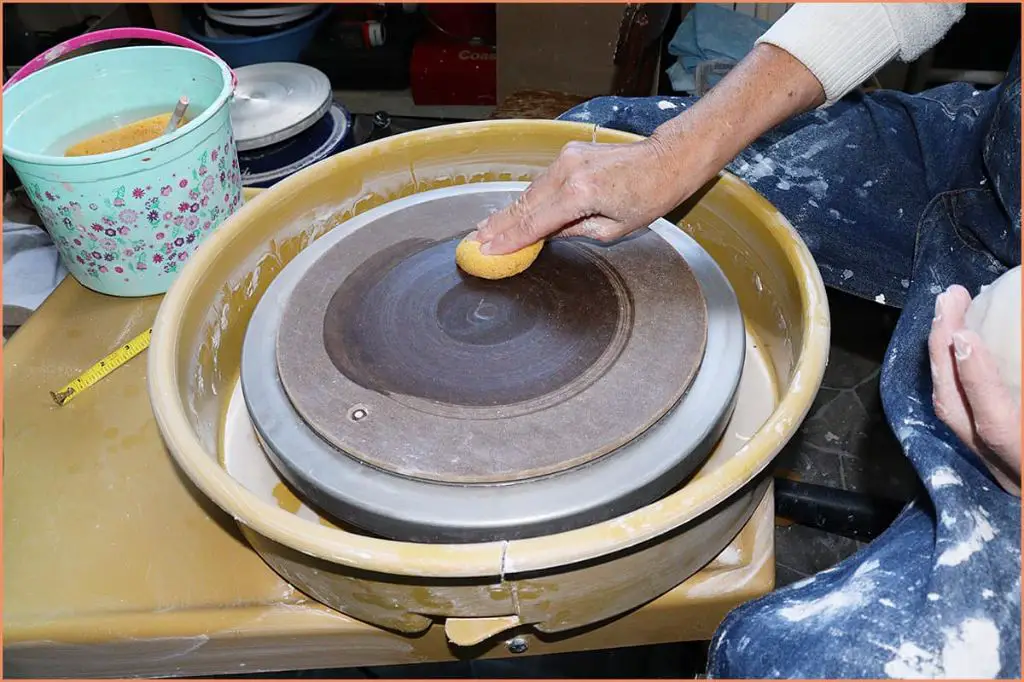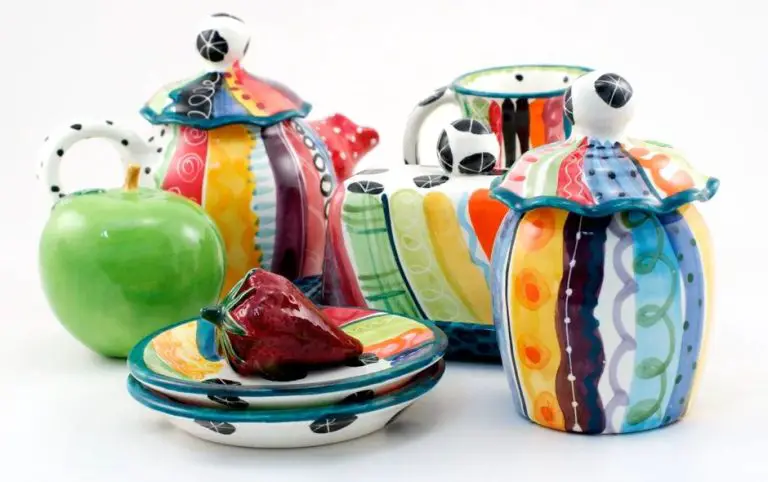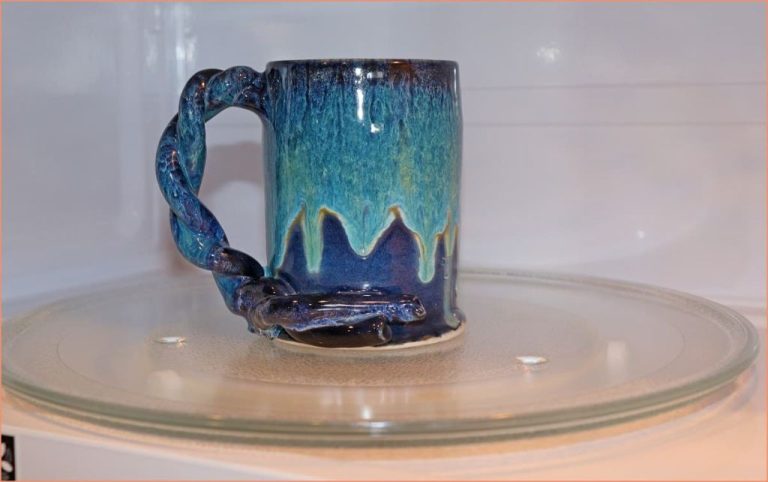What Size Are Pottery Bats?
A pottery bat is a flat disc made of various materials that attaches to the pottery wheel head to provide a smooth, sturdy surface for throwing pottery. Potters use bats to help center and support pots as they are formed on the wheel. Bats allow potters to easily remove finished pieces from the wheel without deforming them. They also provide a consistent surface across multiple projects.
Pottery bats come in a range of sizes, typically ranging from 6 inches to 14 inches in diameter. The most common bat sizes are 10 inches and 12 inches. Bat size is an important consideration, as larger bats provide more support for bigger pieces while smaller bats offer maneuverability for detail work.
Bats are available in different materials like plastic, wood, masonite, and plaster. Plastic and wood bats are lightweight and durable. Masonite bats are absorbent and grip clay well. Plaster bats can be customized but require sealing. Most bats have holes for using “bat pins” to attach the bat to the wheel head.
Standard Pottery Bat Sizes
Pottery bats come in a range of standard sizes to suit different projects and work styles. Some of the most common bat sizes are:
- 12 x 12 inches – A versatile mid-sized bat good for handbuilding and throwing smaller pieces.
- 12 x 24 inches – An elongated bat with more surface area suited to throwing larger bowls or multiple pieces.
- 16 x 16 inches – A large square bat providing ample space for throwing medium to large pieces.
- 18 x 24 inches – One of the largest standard sizes, great for throwing very large bowls, platters and pieces with wide diameters.
These standard bat sizes allow potters to choose a size appropriate for their project and wheel capacity. Smaller bats around 12 inches square offer maneuverability and fit smaller wheel heads, while larger bats provide more workspace for bigger projects. Many potters have a range of bat sizes on hand to accommodate different needs.
Factors Influencing Bat Size
There are several key factors that determine what size of pottery bat is optimal for a potter’s needs:
Type of Pottery Work
The type of pottery being made is a major consideration. Potters doing intricate detailed work or making smaller pieces may prefer smaller bats that give them more control. Larger bats around 12″-16″ suit general pottery work. Extra large bats 18″+ help with very large pieces or sets/groupings. (source)

Space Constraints
The size of the pottery studio or wheel area determines what maximum bat size can fit on the wheel and accommodate safe throwing. A small studio may need to limit bat size to 12″ or under. (source)
Cost
Larger bats cost more, so potters on a tight budget may opt for smaller inexpensive bats around 10″. Custom extra large bats can be very expensive.
Advantages of Large Bats
One of the greatest advantages of using a large bat is its ability to provide more workspace on the wheel for throwing larger pieces or throwing multiples (1). With a bat that is 12″ or larger in diameter, potters can center and throw much bigger pots, bowls, or vases than would be possible on the typical wheel head alone.
Large bats also enable throwing multiples – several pieces at one time with symmetrical walls and a consistent profile. While throwing multiples is possible on a small bat or wheel head, a spacious large bat provides ample room to throw 3, 4, or more pieces simultaneously.
The generous real estate of a big bat is especially advantageous when throwing large serving platters, chargers, and other wide, flat items that require plenty of wheel head space. Larger bats provide potters the flexibility to create bigger and more dramatic one-of-a-kind showstopper pieces.
Advantages of Small Bats
Smaller pottery bats come with their own set of advantages that make them appealing for some potters. Some key benefits of using smaller bats include:
Lightweight and Portable: Small bats are lighter in weight than larger bats. Their reduced size and weight makes them easy to lift, transport, and store. This makes them a convenient choice for potters working in a compact home studio or those who need to transport their work (source).
Fits Small Kilns: Large bats may not fit properly in small kilns. Opting for a small bat ensures you can fire your pieced work in a compact kiln (source).
Bat Size for Beginners
When first starting out in pottery, it’s best to begin with a smaller bat size in the range of 12″x12″ or 12″x24″. Larger bats can be cumbersome for beginners who are still developing their throwing skills and wheel control. The smaller size provides enough space to throw basic vessel forms, while being more manageable for centering clay and maneuvering the bat.
A 12″ square or rectangle bat offers the ideal surface for throwing mugs, bowls, plates, and other small-to-medium sized pieces. As beginners progress and want to make larger pieces, a 12″x24″ bat gives some additional length to throw larger plates, platters, vases etc. The compact size is still easy for a new potter to handle.
Starting on a bat around 12″ in either direction allows new throwers to learn the basics of centering, opening clay, pulling up walls, and finishing rims. Once fundamental skills are established, potters can then advance to larger bats for bigger projects. But for gaining initial experience, a 12″x12″ or 12″x24″ bat provides the right amount of space to learn without being too large and difficult to manage.
Custom-Sized Bats
If the standard bat sizes don’t meet your needs, many pottery suppliers offer custom-sized bats. When ordering a custom bat, you’ll need to specify the dimensions you want. Here are some tips for ordering custom-sized bats:
Most suppliers can make bats up to 24″ in diameter. Larger bats are more challenging to produce and transport. Suppliers typically have a maximum size they can accommodate, often around 24-30″ in diameter.
Consider the wheel size. Make sure your custom bat will fit and balance properly on your pottery wheel. A very large bat on a small kick wheel may be unwieldy.
Factor in weight. Larger custom bats can get very heavy and difficult to handle. A thick, wide bat made from plaster or cement can easily weigh 50 lbs or more.
Choose an appropriate thickness. Thicker bats provide more support for large pots, but thin bats offer more wheel contact and centering ability.
Allow plenty of lead time. Custom bats often take weeks to produce and deliver. Most suppliers will want your order at least 4-6 weeks in advance.
Expect to pay a premium. Custom bats cost more than standard sizes. The larger the size, the more you’ll pay.
Provide size and material specifications. Be sure to give the supplier the exact diameter, thickness, and type of bat material you want.
Consider wheeled carts. Extra large bats may need a wheeled slab roller or cart for manageable transport.
Bats for Specialized Work
In addition to standard round bats, there are some specialty bat shapes that serve specific functions in pottery making:
Oblong Bats
Oblong bats are rectangular rather than round. They provide a larger flat working surface for creating oval or elongated forms like vases, bowls, and platters. The extra width allows more stability when working on wider pieces. Oblong bats can range anywhere from 4 x 6 inches to 2 x 3 feet.
Double Bats
Double bats are two bat tiles attached together, essentially doubling the working surface. They are useful when throwing very large pieces that require more room. Double bats also help keep thicker, heavier clay stabilized while throwing. Some common sizes are 12 x 24 inches or 16 x 32 inches.
Specialized oblong or double bats assist potters in throwing specialized pieces that are wider, longer, or heavier than average. The extra surface area provides added stability and room to manipulate the clay. Potters creating a series of identical ceramic pieces often rely on these specialty bats to improve consistency and ergonomics.
Caring for Bats
Caring for pottery bats properly is important for their longevity and functionality. Here are some tips for keeping bats in good condition:
Cleaning
It’s important to keep bats clean to avoid buildup of dried clay that can lead to warping. After each use, wash the bat gently with water and a soft sponge or rag to remove clay residue. Avoid abrasive scouring that can damage the bat surface over time. Allow the bat to air dry completely before storing or using again. Some potters recommend periodically scrubbing with a baking soda paste to remove stubborn clay stains.
To prevent mold, always ensure the bat dries thoroughly after washing. Let it stand on its side or elevated on supports so air can circulate all around (Lifeartasia, 2022).
Avoiding Warps
Warping occurs when moisture gets trapped unevenly in the bat material, causing it to bend or distort. To prevent warps, avoid submerging just one section of the bat in water when cleaning. Always store bats flat and level, not leaning against a wall or other surface. Avoid placing heavy objects on bats for prolonged periods. Regularly check bats for any small warps starting and gently bend back into shape.
Wood bats can be sanded smooth if small warps develop. For plastic, canvas, or other wet-formed bats, warping may be irreversible once it occurs. Taking steps to keep bats completely dry when not in use will help maintain their shape.
Key Takeaways
Pottery bats come in a range of standard sizes, with the most common being 12”, 14”, 16”, 18”, and 20” diameters. Larger bats provide more working room but can be heavy and unwieldy. Smaller bats are lighter and easier to handle but give less space. Beginners often start with a 12” or 14” bat. More advanced potters may use larger bats for throwing larger pieces. Custom bat sizes are also available. Specialty bats like oval, rectangular, and multi-part bats serve specific throwing needs. Proper bat care involves keeping it dry and free of clay buildup. Choose a bat size based on your skill level, studio space, and the types of pieces you want to throw.



